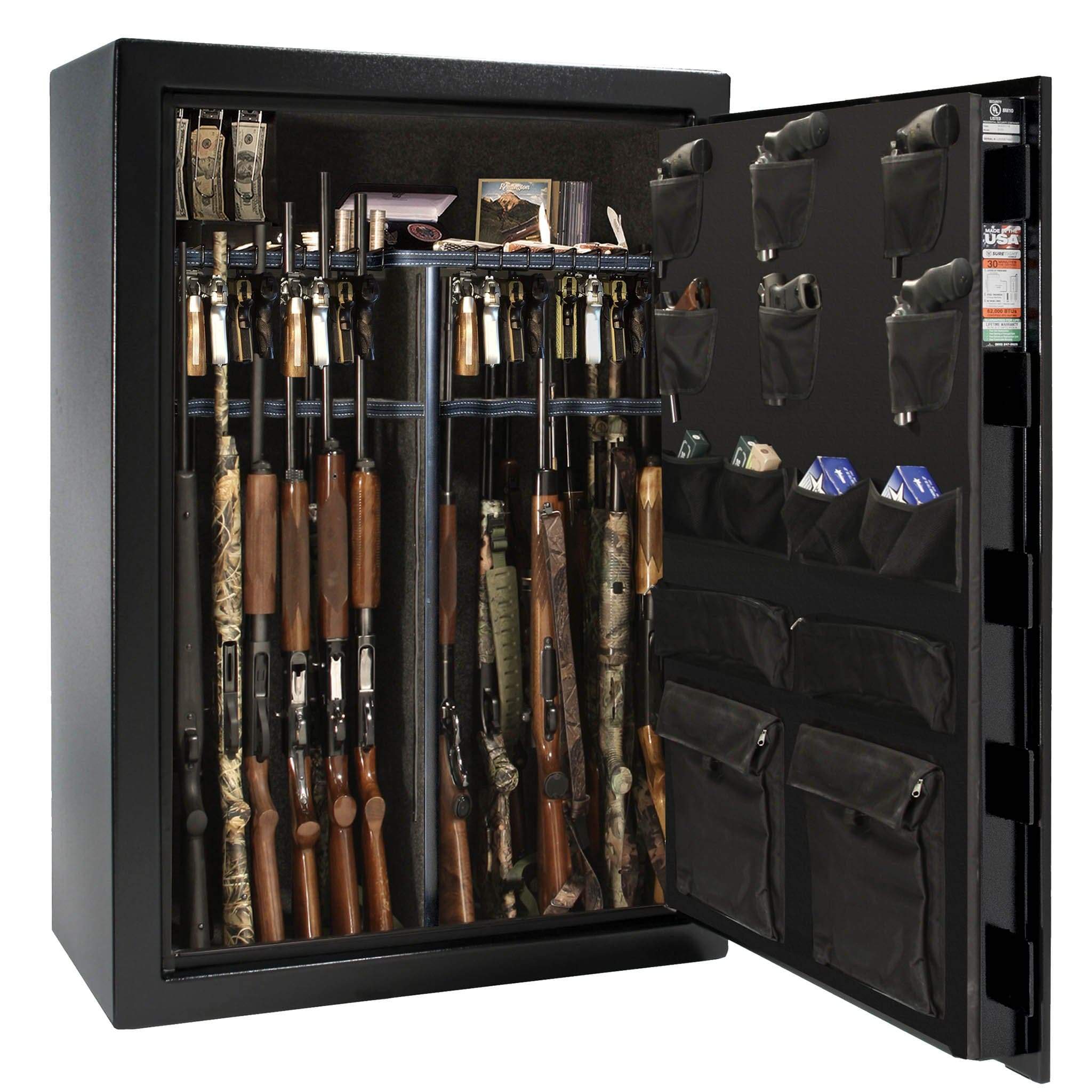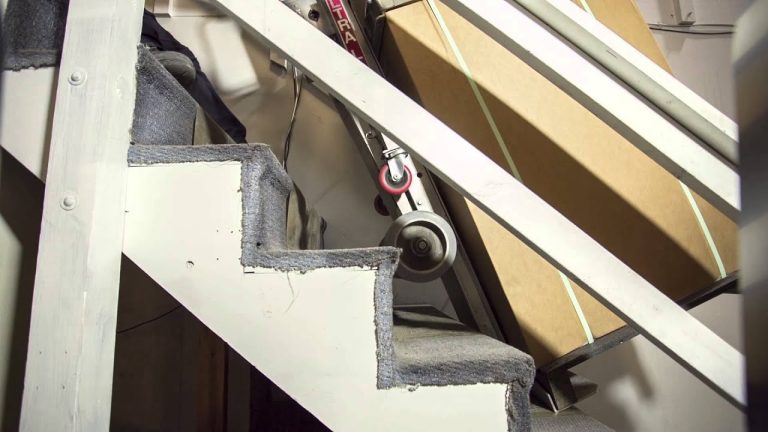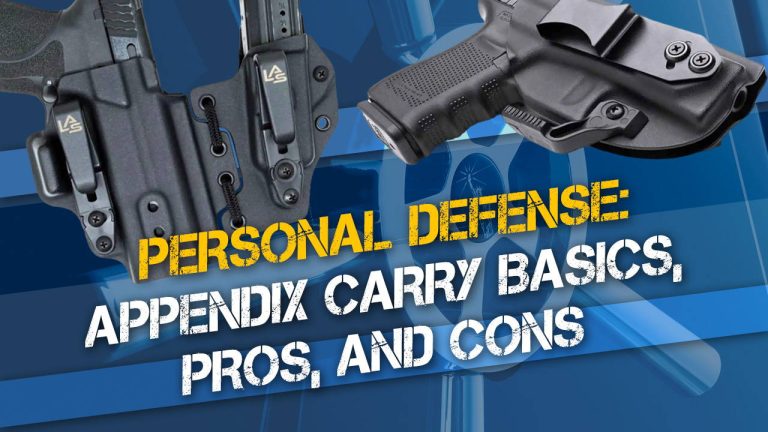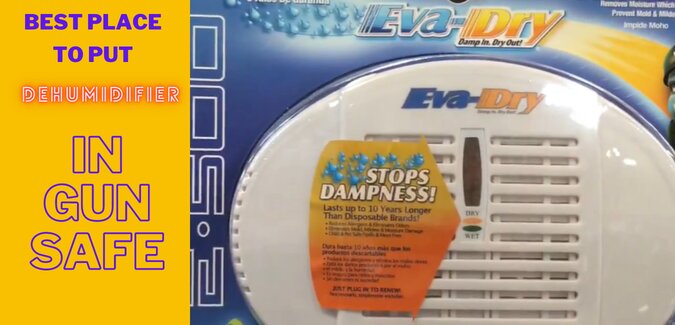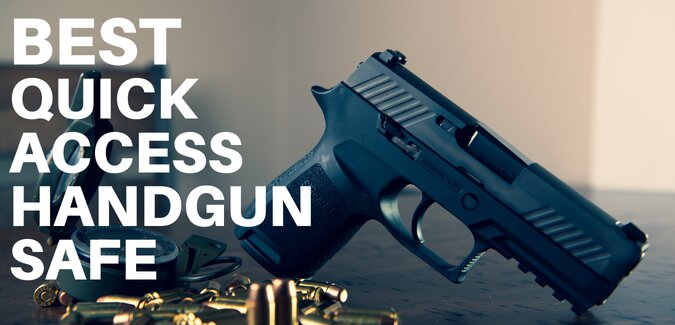What is a Gun Safe? Understanding Its Purpose
A gun safe is a secure storage container for firearms and ammunition. It protects against unauthorized access, theft, and damage.
A gun safe is essential for gun owners. It ensures that firearms are stored securely, reducing the risk of accidents and unauthorized use. Gun safes come in various sizes and types, catering to different needs and preferences. They often feature robust locking mechanisms, including combination locks, biometric scanners, and electronic keypads.
Some gun safes are fireproof and waterproof, providing additional protection for valuable contents. Investing in a quality gun safe provides peace of mind, knowing that your firearms are safe and secure. Proper storage is crucial for responsible gun ownership and enhances overall safety in homes and workplaces.
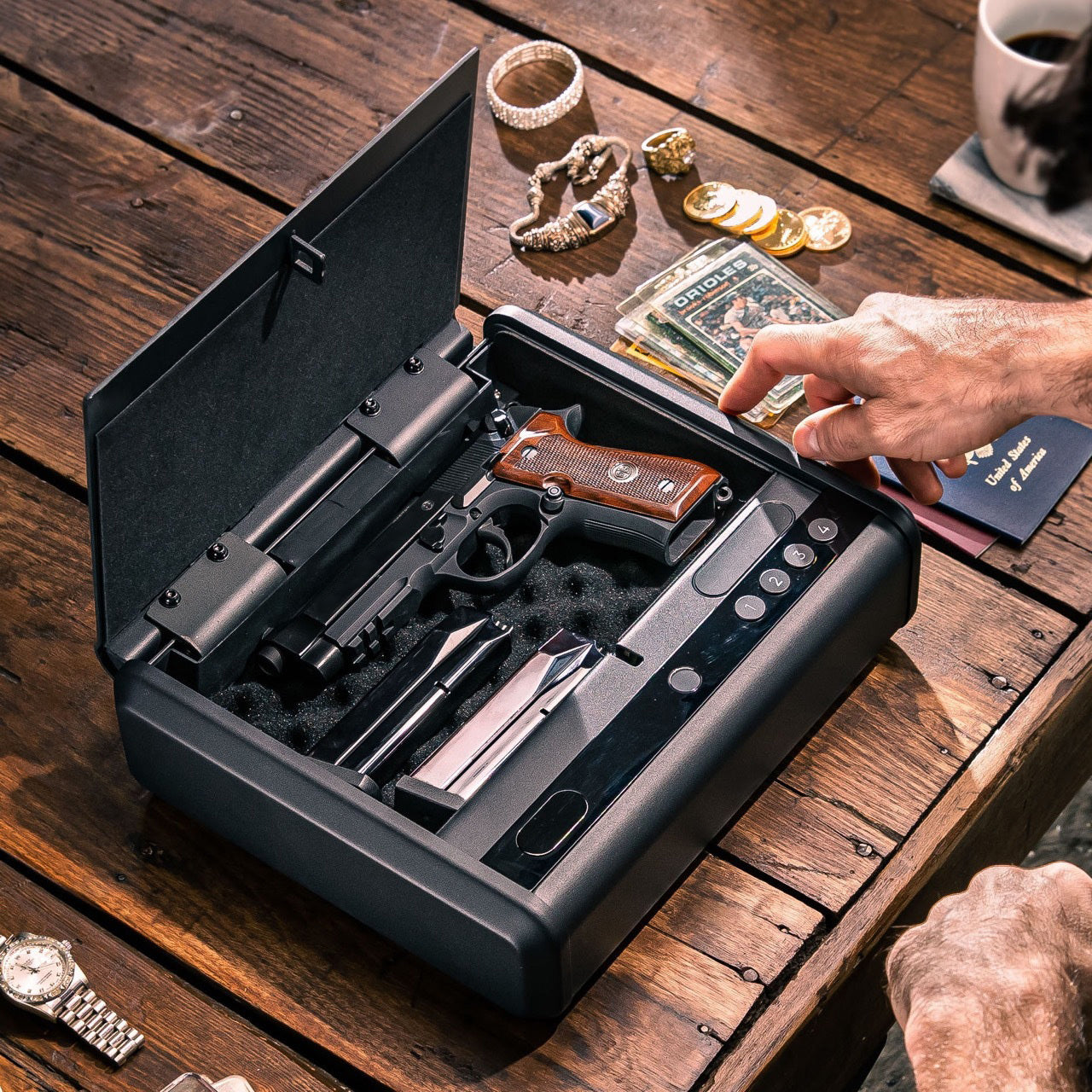
Credit: www.wyze.com
Introduction To Gun Safes
A gun safe is a secure storage container. It is designed to store firearms and ammunition. Gun safes are crucial for responsible gun ownership. They help prevent unauthorized access and ensure safety.
Purpose Of Gun Safes
The primary purpose of a gun safe is to provide security. It keeps firearms away from children and unauthorized users. Gun safes also protect guns from theft. They are built to withstand forced entry attempts. Some gun safes offer fire protection as well.
Importance Of Firearm Security
Firearm security is vital for every gun owner. A gun safe minimizes the risk of accidents. It prevents tragic mishaps involving children. Proper storage also complies with legal requirements. Many regions mandate secure firearm storage.
| Feature | Importance |
|---|---|
| Child Safety | Prevents accidental shootings |
| Theft Prevention | Protects against burglary |
| Fire Resistance | Safeguards in case of fire |
| Legal Compliance | Meets regulatory standards |
A gun safe is an essential investment. It ensures peace of mind. Choose the right safe for your needs. Prioritize safety and security always.

Credit: browningsafes.com
Types Of Gun Safes
Gun safes are crucial for safely storing firearms. They come in many types. Each type has unique features to meet different needs. Understanding these types helps in making the best choice.
Biometric Safes
Biometric safes use fingerprint recognition. They offer quick access. Only registered fingerprints can open these safes. This feature ensures high security. Biometric safes are perfect for quick and easy access.
Here are some benefits of biometric safes:
- No keys needed
- Fast and secure access
- Multiple fingerprint storage
Combination Safes
Combination safes require a numerical code. Users turn a dial to enter the code. These safes are very reliable. They do not depend on electronics. This makes them durable and less prone to failure.
Advantages of combination safes include:
- Durability and reliability
- No batteries needed
- High security with complex codes
Electronic Lock Safes
Electronic lock safes use a keypad for entry. Users type a code to unlock. These safes are user-friendly and efficient. They offer easy access and high security. Some models even have backup keys.
Key benefits of electronic lock safes are:
- Easy to use
- Quick access
- Backup keys for emergencies
Key Features To Consider
Choosing the right gun safe can be a daunting task. Understanding the key features to consider will help you make an informed decision. Here are some crucial aspects to look for in a gun safe.
Size And Capacity
The size and capacity of a gun safe are critical. You need to ensure it can accommodate your firearms and other valuables. Think about the number of guns you own. Also, consider any future purchases.
- Small safes are good for a few handguns.
- Medium safes can hold several long guns and handguns.
- Large safes are ideal for collectors with many firearms.
Measure the space where you plan to place the safe. Make sure it fits comfortably.
Fire And Water Resistance
Fire and water resistance protect your valuables from disasters. Look for a safe with a high fire rating.
| Fire Rating (Minutes) | Temperature (Degrees Fahrenheit) |
|---|---|
| 30 | 1200 |
| 60 | 1400 |
Water resistance is also important. It prevents damage during floods or water leaks. Check for safes with a waterproof seal.
Locking Mechanisms
The locking mechanism is a key feature for security. Common types include:
- Electronic Locks: Easy to use, quick access.
- Biometric Locks: Use fingerprints, high security.
- Dial Locks: Traditional, no batteries needed.
Each type has its pros and cons. Choose the one that best suits your needs and preferences.
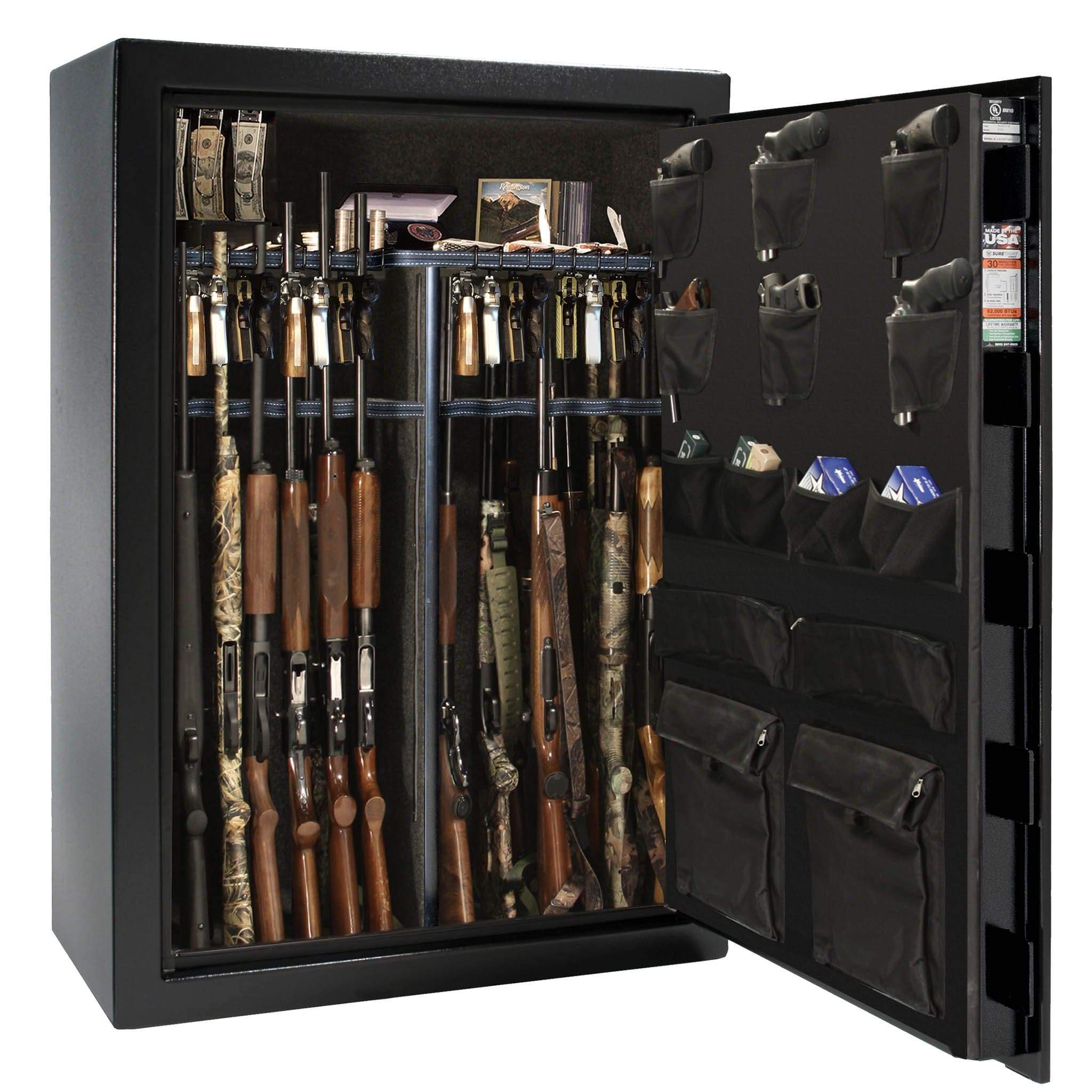
Credit: www.libertysafe.com
Installation And Placement
Installing and placing a gun safe correctly is crucial for security. Proper installation ensures your firearms are secure. Choosing the right spot enhances safety and accessibility.
Home Installation Tips
Follow these home installation tips to secure your gun safe:
- Read the manual: Always start by reading the installation instructions.
- Use proper tools: Ensure you have all the necessary tools.
- Secure to the floor or wall: Bolt your safe to prevent theft.
- Check for moisture: Avoid damp areas to prevent rust.
- Seek professional help: If unsure, hire a professional installer.
Optimal Placement For Safety
Choosing the optimal placement for your gun safe enhances safety. Consider these factors:
| Factor | Details |
|---|---|
| Accessibility | Place it where adults can reach easily. |
| Out of sight | Keep it hidden from visitors and intruders. |
| Structural support | Install in a structurally sound area. |
| Fire protection | Avoid placing it near flammable items. |
Always think about safety first when placing your gun safe.
Legal Requirements
Understanding the legal requirements for owning a gun safe is crucial. Different laws at state and federal levels guide safe storage practices. This ensures the safety of families and the community.
State And Federal Laws
Both state and federal laws govern gun safe ownership. These laws vary by location. Some states have strict regulations, while others are more lenient. Federal laws set minimum standards for all states.
Here is a table summarizing state and federal laws:
| Law Type | Description |
|---|---|
| Federal Law | Sets nationwide standards for gun safe requirements. |
| State Law | Varies by state; some states have stricter regulations. |
Regulations For Safe Storage
Safe storage regulations ensure guns are stored safely. This prevents unauthorized access and accidents. Most states require gun owners to use secure storage methods.
Common requirements include:
- Using a gun safe or lockbox.
- Storing ammunition separately.
- Ensuring safes are not easily accessible to children.
Some states also have specific guidelines for gun safe features:
- Minimum thickness of the safe walls.
- Type of locking mechanism used.
- Fire resistance rating.
Meeting these regulations is essential for gun owners. It ensures safety and compliance with the law.
Maintenance And Care
Proper maintenance and care of your gun safe ensures its longevity. A well-maintained safe keeps your firearms secure and functional. This section covers essential tips for keeping your gun safe in top condition.
Regular Cleaning
Regular cleaning of your gun safe is crucial. Dust and dirt can accumulate over time. Use a soft cloth to wipe down the exterior. Avoid harsh chemicals that could damage the finish.
- Wipe down the interior with a dry cloth.
- Clean any shelves or racks inside the safe.
- Inspect for any signs of rust or corrosion.
Lock Mechanism Maintenance
The lock mechanism is the heart of your gun safe. It needs regular attention to function properly.
- Lubricate the lock with a graphite-based lubricant.
- Test the lock regularly to ensure smooth operation.
- Check for any signs of wear or damage on the lock.
Keep the lock mechanism clean and free from debris. This prevents jamming and ensures it operates smoothly.
Common Myths
Gun safes are essential for protecting firearms. Yet, many myths surround their effectiveness. Let’s debunk some of these common myths.
Myth: Gun Safes Are Unbreakable
Many people believe gun safes are unbreakable. This is not true. Though strong, no safe is completely unbreakable. Given enough time and tools, a determined thief can break into any safe.
Gun safes provide a deterrent. They make it harder for thieves to access firearms quickly. Always use additional security measures. Consider alarms and surveillance cameras.
Myth: Any Safe Is Secure
Not all safes offer the same level of security. Many believe any safe will protect their guns. This is incorrect. Safes have different ratings and features.
Fire ratings and lock types are crucial. Some safes resist fire for longer periods. Others have advanced locking mechanisms. Choose a safe based on your specific needs.
| Feature | Importance |
|---|---|
| Fire Rating | Protects from fire damage |
| Lock Type | Prevents unauthorized access |
| Material | Determines strength and durability |
Research before buying a gun safe. Look for trusted brands and reviews. Ensure the safe meets your specific security needs.
Choosing The Right Gun Safe
Choosing the right gun safe is crucial for protecting your firearms. It ensures safety for you and your family. This section will guide you through key factors to consider.
Assessing Your Needs
The first step in choosing a gun safe is assessing your needs. Determine the number of firearms you own. Consider the size and type of guns. Are they handguns or rifles? This will help you decide the size of the safe.
Think about where you’ll place the safe. Measure the space available. Ensure it fits well and is accessible. Also, assess the security level you need. Do you require high-level protection or basic security?
Budget Considerations
Setting a budget is essential. Gun safes come in various price ranges. Determine how much you can spend. Remember, higher price often means better features and security.
Compare different safes within your budget. Look for features like fire resistance, waterproofing, and lock types. A good safe balances cost and security.
| Feature | Budget Range |
|---|---|
| Basic Security | $100 – $300 |
| Medium Security | $300 – $600 |
| High Security | $600 – $1000+ |
Consider the value of the guns you are protecting. Investing in a quality safe is worthwhile. Prioritize safety and functionality over saving a few dollars.
Frequently Asked Questions
What Is A Gun Safe Used For?
A gun safe is used to securely store firearms and ammunition. It prevents unauthorized access, theft, and accidents. Gun safes also protect guns from damage caused by fire or floods.
How Do Gun Safes Protect Firearms?
Gun safes protect firearms with strong, reinforced materials and locking mechanisms. These safes often have fire-resistant and waterproof features. They ensure that unauthorized individuals cannot access the firearms.
Are Gun Safes Fireproof?
Many gun safes are fire-resistant but not completely fireproof. They can protect contents from high temperatures for a limited time. Always check the fire rating before purchasing.
How To Choose The Right Gun Safe?
Choose a gun safe based on size, lock type, and security features. Consider fire and water resistance ratings. Ensure it meets your storage needs and budget.
Conclusion
A gun safe provides essential security for firearms, ensuring they are stored safely and responsibly. It helps prevent unauthorized access and accidents. Investing in a quality gun safe protects both your weapons and loved ones. Prioritize safety and peace of mind by choosing the right gun safe for your needs.

